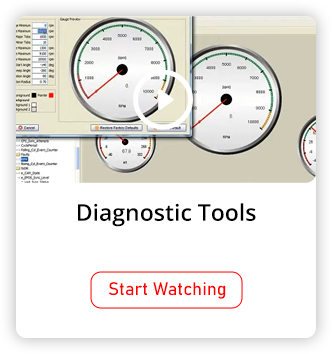Engine Management System (EMS) Working Explained

The Engine Management System (EMS), also known as the Engine Control Unit (ECU) or Engine Control Module (ECM), is a crucial component in modern vehicles that controls various aspects of engine operation to optimize performance, fuel efficiency, and emissions.
Here's a breakdown of how the EMS typically works:
-
Sensor Inputs: The EMS gathers data from various sensors placed throughout the engine and exhaust system. These sensors monitor parameters such as engine speed (RPM), air intake temperature, coolant temperature, throttle position, oxygen levels in the exhaust (O2 sensors), and more.
-
Data Processing: The EMS processes the data received from the sensors in real-time. It uses pre-programmed algorithms and maps to interpret this data and determine the optimal settings for the engine under current operating conditions. These algorithms are based on factors like engine load, temperature, and speed.
-
Control Outputs: Based on the processed sensor data, the EMS sends commands to various actuators within the engine system to adjust fuel delivery, ignition timing, and other parameters. These actuators include fuel injectors, ignition coils, idle air control valves, and sometimes even turbochargers or variable valve timing systems.
-
Fuel Injection: One of the primary functions of the EMS is to regulate the fuel injection process. It calculates the precise amount of fuel needed based on factors like engine load and air-to-fuel ratio requirements. The EMS then signals the fuel injectors to spray the appropriate amount of fuel into the combustion chambers.
-
Ignition Timing: The EMS also controls the timing of spark ignition in gasoline engines. By adjusting the timing of the spark, it optimizes combustion efficiency and power output while minimizing the risk of engine knock or detonation.
-
Emissions Control: Modern EMS systems play a crucial role in emissions control by monitoring and adjusting engine parameters to ensure compliance with emissions regulations. This includes managing exhaust gas recirculation (EGR), controlling the operation of catalytic converters, and monitoring the effectiveness of the air-fuel mixture.
-
Diagnostic Functions: EMS systems often include diagnostic capabilities to detect and report engine faults or malfunctions. They can store trouble codes that indicate specific issues with the engine or emissions system, helping technicians diagnose and repair problems more efficiently.
-
Adaptive Learning: Some advanced EMS systems feature adaptive learning capabilities, where they continuously adjust their operating parameters based on real-world driving conditions. This allows the engine to optimize performance and efficiency over time, taking into account factors like driving style, fuel quality, and environmental conditions.
Overall, the Engine Management System is a sophisticated computerized control system that plays a vital role in modern vehicle operation, ensuring optimal performance, efficiency, and emissions compliance under a wide range of driving conditions.












